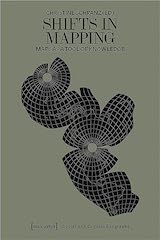
|
FreeComputerBooks.com
Links to Free Computer, Mathematics, Technical Books all over the World
|
|
- Title: Shifts in Mapping: Maps as a Tool of Knowledge
- Author(s) Christine Schranz
- Publisher: transcript publishing (November 27, 2021); eBook (Creative Commons Licensed)
- License(s): Creative Commons License (CC)
- Paperback: 294 pages
- eBook: PDF and PDF Files
- Language: English
- ISBN-10: 3837660419
- ISBN-13: 978-3837660418
- Share This:

|
Depicting the world, territory, and geopolitical realities involves a high degree of interpretation and imagination. It is never neutral. Cartography originated in ancient times to represent the world and to enable circulation, communication, and economic exchange. Today, IT companies are a driving force in this field and change our view of the world; how we communicate, navigate, and consume globally.
About the Authors- N/A
 Similar Books:
Similar Books:
-
 Mapping Landscapes in Transformation: Historical Analysis
Mapping Landscapes in Transformation: Historical Analysis
The development of Historical Geographical Information Systems (HGIS) and other methods from the digital humanities have revolutionised historical research on cultural landscapes. The aim is to advance cartographic practices.
-
 The Cognitive Life of Maps (Roberto Casati)
The Cognitive Life of Maps (Roberto Casati)
The “mapness of maps” - how maps live in interaction with their users, and what this tells us about what they are and how they work. Charting the way to a new understanding of what maps mean.
-
 Mobile Mapping: Space, Cartography and the Digital
Mobile Mapping: Space, Cartography and the Digital
This book argues for a theory of mobile mapping, a situated and spatial approach towards researching how everyday digital mobile media practices are bound up in global systems of knowledge and power.
-
 Cartography - A Tool for Spatial Analysis (Carlos Bateira)
Cartography - A Tool for Spatial Analysis (Carlos Bateira)
This book presents several contributions at different areas and activities showing the importance of the Cartography to the perception and organization of the territory, showing the importance of the cartography to the perception and organization of the territory.
-
 Cartography and Map Design ( Carlos Bateira)
Cartography and Map Design ( Carlos Bateira)
This book is an inspiring and creative companion along the nonlinear journey toward making a great map. It provides sound, visually compelling information that translates into practical and useful tools for modern mapmaking.
-
 A Practical Guide to Geostatistical Mapping (Tomislav Hengl)
A Practical Guide to Geostatistical Mapping (Tomislav Hengl)
This book is a practical guide to geostatistical mapping using R+gstat/geoR, SAGA GIS and Google Earth combo of software packages. Includes seven diverse data analysis exercises.
-
 Map Projections: A Working Manual (John P. Snyder)
Map Projections: A Working Manual (John P. Snyder)
This book contains substantial introductory information about map projection families and distortions. Each projection is started with a useful summary of the context and usage of that particular projection. It then delves into details of each projection.
-
 Understanding Map Projections (Melita Kennedy, et al.)
Understanding Map Projections (Melita Kennedy, et al.)
A map projection fundamentally impacts the mapmaking process. The book presents a clear understanding of the processes necessary to make logical decisions on selecting an appropriate map projection for a given data set.
-
 Reading Topographic Maps (Robert Davidson)
Reading Topographic Maps (Robert Davidson)
A general introduction with to maps, security, topographic map symbols, grids, the use of overlays, aerial photographs, land navigation, use of compass, orienteering, etc. . Very well illustrated, you are lost without it.
-
 Map Projections Used by the United States Geological Survey
Map Projections Used by the United States Geological Survey
Under each of the sixteen projections described, the nonmathematical phases are presented first, without interruption by formulas. They are followed by the formulas and tables, and the nonmathematical discussion of the next projection.
-
 Nature of Geographic Information Systems (David DiBiase)
Nature of Geographic Information Systems (David DiBiase)
The purpose of this book is to promote understanding of the Geographic Information Science and Technology enterprise (GIS&T, also known as 'geospatial'). It explores the nature of geographic information.
-
 An Introductory Textbook on Geographic Information Systems
An Introductory Textbook on Geographic Information Systems
This textbook is an introduction to GIS, but most of the chapter's concepts are also applicable to other geotechnologies including remote sensing, global positioning systems (GPS), Internet mapping, and virtual globes.
-
 Geographic Information System Basics (Jonathan Campbell)
Geographic Information System Basics (Jonathan Campbell)
From the melting of the polar ice caps to privacy issues associated with mapping, this book provides a gentle, yet substantive, introduction to the use and application of digital maps, mapping, and GIS.






